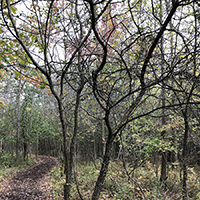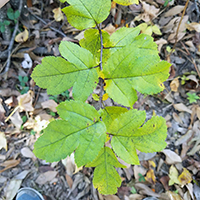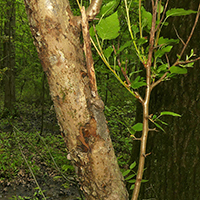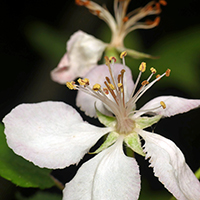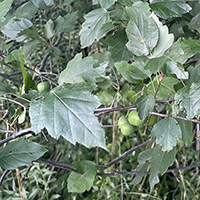What wild crabapple looks like
Size and shape
- Reaches 9 metres high.
- Trunk reaches up to 30 centimetres in diameter.
Leaves
- Green leaves are elongated and triangular with a round base (3 to 8 centimetres).
- Leaves have toothed margins, with teeth increasing in size towards the base.
Bark
- Reddish-brown and scaly bark.
Flowers
- White flowers with pink streaks that grow in clusters of 2 to 3 (20 to 30 millimetres).
- Bloom after leaves grow.
Fruit
- Green apples grow in the spring and remain on the tree into winter (25 to 35 millimetres).
Where wild crabapple is found
Wild crabapple is found in Southern Ontario near lakes Erie and Ontario.
What you need to know to grow wild crabapple
- Moisture: grows best in moist, well drained soils.
- Soil: grows best in loamy or clay soils.
- Shade: grows best in full sun, but can grow in partial shade.
- Caution:
- apple scab is a fungal disease that affects the foliage, blossoms and fruit of apple trees. Lesions develop on the leaves, eventually causing them to curl and fall from the tree. Black spots develop on fruit, leading to apple deformities and cracking. Apple scab can be controlled with fungicides.
Benefits and uses of wild crabapple
Wildlife benefits
Wild crabapple fruits are a food source for many species, including:
- foxes
- squirrels
- rabbits
- birds
Some species use the trees as cover and nesting sites.
Commercial uses
Crabapple trees are used for landscaping and windbreak. The apples are used in preserves and ciders but are too bitter to eat.
Fun facts about wild crabapple
- Wild crabapple trees rarely live more than 100 years.
- Wild crabapple is the only apple species native to Ontario.
Updated: October 06, 2023
Published: October 06, 2023
